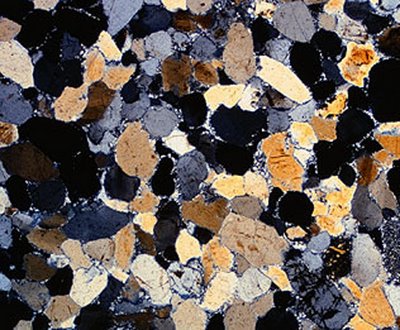"It is entirely possible to project light through bedrock," an email I soon received explained. "Thin sections, samples of rock ground to a thickness of 30 microns for viewing under a microscope, are a standard tool of petrology."
So I was pointed to a website, did some research – including petrographic imagery at Humboldt State University, a Parisian Atlas minéralogique, and some "plutonic microtextures" at UNC-Chapel Hill – and it's true: you can make your own Mothlight using slices of bedrock. The continental plates as a kind of underground Hollywood. Film in mineral form.
Some examples? Just look below:







How would you do it? As but one example, you could animate the following sequence –



– which would not only display a very obvious sense of visual continuity, it would offer its own short geo-metamorphic narrative: anorthosite becoming gneiss becoming biotite-rich granite.
You could explain and demonstrate simultaneously the formational history of the earth, using abstract patterns of mineral imagery.
Bedrock: The Film.
(Thanks to Mike Weber for the initiating email; and all images above are by Kent Ratajeski at UNC-Chapel Hill).
No comments:
Post a Comment